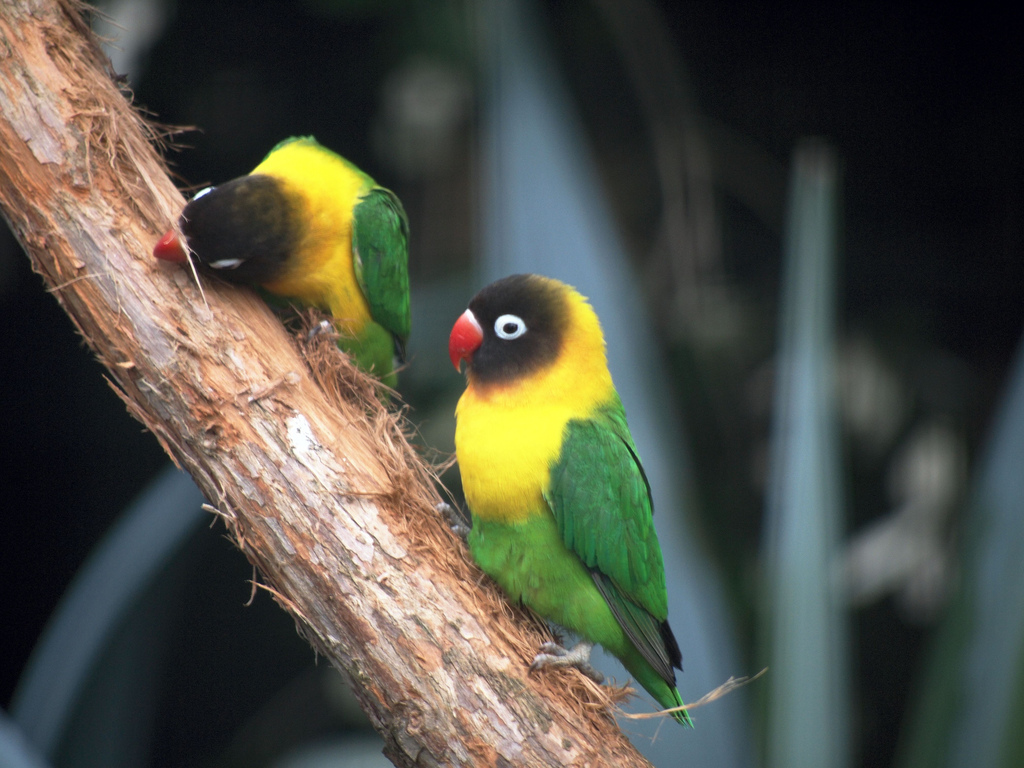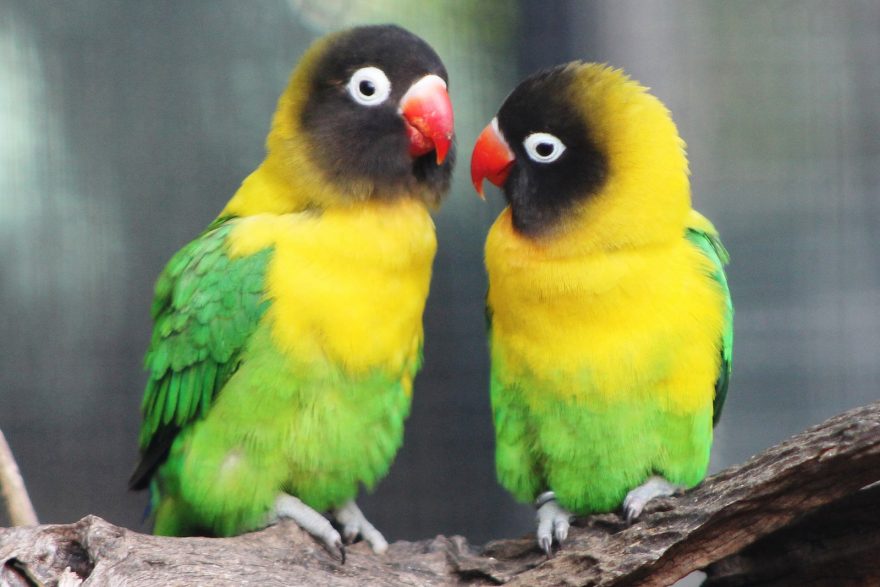The Masked Lovebird (sometimes called the yellow-collared Lovebird) is a small parrot native to northeast Tanzania. They are among the most commonly kept birds throughout the world, thanks to their low care requirements and readiness to breed. Their immense popularity has resulted in the establishment of many feral populations throughout the world.

Housing & Compatibility
Lovebirds can be kept in a wide variety of different aviary types, including cages, traditional aviaries and suspended flights. An adequate amount of flying space is necessary to ensure good fitness and minimal stress. Masked lovebirds can be quite aggressive, so multiple perches should be placed to allow them to escape one another. These perches should be placed as far apart as possible to maximize the amount of exercise they receive.
Non-toxic leaves and branches should be provided for chewing. They will be destructive to foliage in a planted aviary.
Lovebirds make an enormous amount of mess, making concrete the best flooring option. The floor should be loosely littered with nesting material (straw, hay, dried grass) and pieces of cuttlefish bone. The ground will need to be swept roughly once a month to remove discarded seeds and pieces of tree the birds have shredded.
Nest boxes should be placed at a high point in the aviary (to resist invasion from mice, snakes and other pests), preferably all at the same level to prevent territorial disputes. Commercial or home-made nest boxes are suitable. Lovebirds prefer boxes that are slightly larger than a budgie nestbox. Birds will roost in the nest box at night.
Due to their aggressive nature, lovebirds should not be housed with other species of birds. It is not uncommon for weaker birds to be killed during territorial fights between pairs—especially during the breeding season.
Breeding
Masked Lovebirds construct a nest from leaves, palm fronds and straw. Some birds will simply pile all of the nesting material into the bottom of a box and lay eggs on the top, while others will construct elaborate tunnels and chambers. Palm fronds increase the humidity of the nest and improve egg hatch rates.
Commercially produced lovebird nesting boxes are the preferred nesting receptacle used by most breeders, however some prefer to use hollow logs. There should always be significantly more available nests than pairs of birds to minimize territorial disputes.
Lovebirds will begin mating with a suitable partner at roughly one year of age. The hen will lay 3-5 eggs about a week after mating, which will then be incubated for three weeks. Typically, only the female will incubate the eggs, but males will occasionally contribute.
Once the young hatch, both parents will feed the chicks in the nest for approximately a month. Young birds become independent six to eight weeks after fledging. The young may need to be removed shortly after becoming independent to prevent aggression from the parents.
Though the bond between pairs is strong, if their partner dies they will usually mate with a replacement the following year. The new bird should be introduced almost immediately.
Masked lovebirds will hybridize with other lovebird species within Agapornis genus. Hybrids are usually infertile and can suffer from a variety of health ailments. Always make sure that an oddly colored bird is actually a mutation and not the product of crossing different species.
Hens should be preventing from breeding more than three times a year. Overbreeding leads to a reduced lifespan and smaller, poorer quality nests.

Sexing
Male and female masked lovebirds have identical plumage, so visual sexing is almost impossible. DNA sexing is the most reliable way to accurately determine a bird’s sex.
A popular way to sex lovebirds is by feeling the distance between the pelvis bones. The distance is roughly 1-3 millimeters in males, while it’s much wider (6–8mm) in sexually mature females.
The observation of subtle behavioral differences can also be used to determine a lovebird’s sex. Females are often more aggressive and loud than males. They are also more likely to begin construction of a nest, or construct a nest while not part of an established pair.
Mutations
There are dozens of color mutations available for the masked lovebird. An uncommon mutation will demand a much higher price than one that’s more readily available. Similarly, the proliferation of mutation birds has significantly increased the rarity and cost of “pure normal” birds. Popular mutations include albino (white), lutino (yellow), blue, cobalt, and mauve.
Diet & Feeding
A quality small parrot seed mix forms the basis of the masked lovebird’s diet. A good diet includes a mix of fruits and vegetables, such as apple, pear and corn. Leafy green vegetables are essential; silverbeet (chard), bok choy, kale and endive are particularly enjoyed.
Many breeders prefer to feed pellets instead of seed. Pellets provide a more balanced intake of vitamins and minerals and produce less waste. Commercial supplements such as egg & biscuit mix can be added to the diet to provide additional protein during the breeding season.
Health
A strict worming and parasite control regime is essential to maintain the long-term health of all captive birds.
A healthy masked lovebird has a life expectancy of ten to fifteen years.